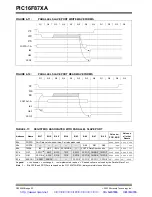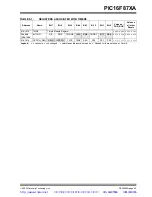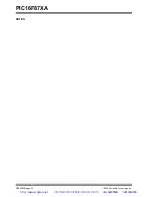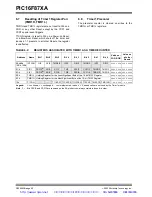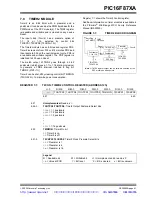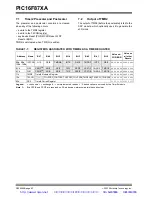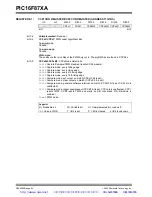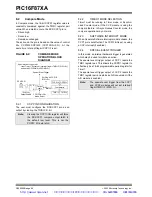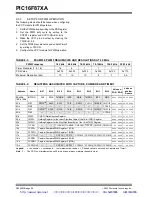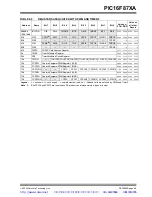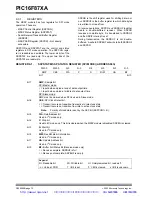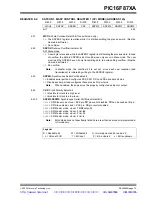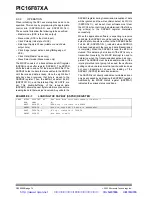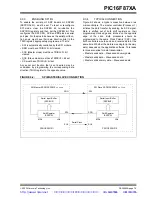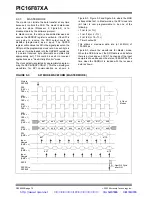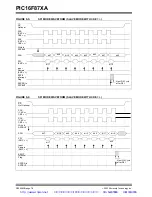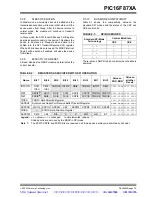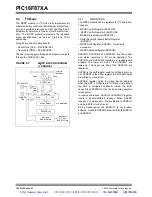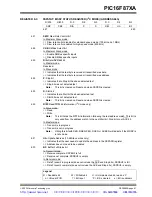
PIC16F87XA
DS39582B-page 66
2003 Microchip Technology Inc.
8.2
Compare Mode
In Compare mode, the 16-bit CCPR1 register value is
constantly compared against the TMR1 register pair
value. When a match occurs, the RC2/CCP1 pin is:
• Driven high
• Driven low
• Remains unchanged
The action on the pin is based on the value of control
bits, CCP1M3:CCP1M0 (CCP1CON<3:0>). At the
same time, interrupt flag bit CCP1IF is set.
FIGURE 8-2:
COMPARE MODE
OPERATION BLOCK
DIAGRAM
8.2.1
CCP PIN CONFIGURATION
The user must configure the RC2/CCP1 pin as an
output by clearing the TRISC<2> bit.
8.2.2
TIMER1 MODE SELECTION
Timer1 must be running in Timer mode, or Synchro-
nized Counter mode, if the CCP module is using the
compare feature. In Asynchronous Counter mode, the
compare operation may not work.
8.2.3
SOFTWARE INTERRUPT MODE
When Generate Software Interrupt mode is chosen, the
CCP1 pin is not affected. The CCPIF bit is set, causing
a CCP interrupt (if enabled).
8.2.4
SPECIAL EVENT TRIGGER
In this mode, an internal hardware trigger is generated
which may be used to initiate an action.
The special event trigger output of CCP1 resets the
TMR1 register pair. This allows the CCPR1 register to
effectively be a 16-bit programmable period register for
Timer1.
The special event trigger output of CCP2 resets the
TMR1 register pair and starts an A/D conversion (if the
A/D module is enabled).
Note:
Clearing the CCP1CON register will force
the RC2/CCP1 compare output latch to
the default low level. This is not the
PORTC I/O data latch.
CCPR1H CCPR1L
TMR1H
TMR1L
Comparator
Q
S
R
Output
Logic
Special Event Trigger
Set Flag bit CCP1IF
(PIR1<2>)
Match
RC2/CCP1
TRISC<2>
CCP1CON<3:0>
Mode Select
Output Enable
pin
Special event trigger will:
reset Timer1, but not set interrupt flag bit TMR1IF (PIR1<0>)
and set bit GO/DONE (ADCON0<2>).
Note:
The special event trigger from the CCP1
and CCP2 modules will not set interrupt
flag bit TMR1IF (PIR1<0>).
http://www.xinpian.net
提供单片机解密、IC解密、芯片解密业务
010-62245566 13810019655

